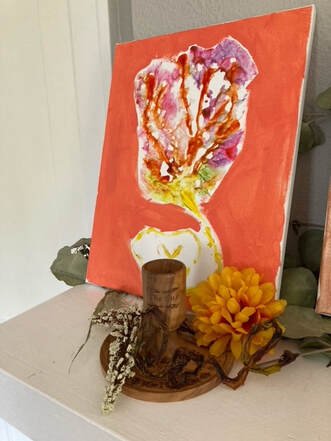Oh, Placenta!
I think placentas are so incredibly fascinating. To each their own, but it’s a shame our society typically disregards the life-sustaining organ after a baby is born.
Your placenta is the only organ that is formed at the time of pregnancy. It produces and secretes hormones necessary for a healthy and viable pregnancy such as progesterone and estrogen. It attaches to the wall of your uterus and grows alongside the fetus until its considered mature at around 34 weeks.
Placentas work “forward” to supply nutrients, antibodies, and oxygen from birther to baby while also working “backwards” to remove waste and carbon dioxide back into your bloodstream for elimination and exhalation.
After the baby is born, the placenta must be born as well. It usually takes place within 30 minutes. This is referred to as the afterbirth.
Delayed cord clamping allows for continuous bonding with birther and baby as they have not been separated by cutting the umbilical cord. It can make room for more gentleness. It also gives baby support while they are learning to breathe. To top it off, delayed cord cutting allows the complete transfer of blood and much needed nutrients from your placenta to your newborn baby.
While delayed cord cutting is becoming more and more common there are a couple other options to consider as well. From lotus birth to cord cutting ceremonies, these options allow you and your baby significant benefits and an intentional moment to acknowledge what your body has created! Robin Lim’s book Placenta the Forgotten Charka is a great resource to start with.
At Unearthing Tradition, I first encourage my clients to decide what is most important to then. Then, ask your care provider if they, along with the policies of the birthing facility, are supportive of your afterbirth care decisions.
And then, well, sometimes I encapsulate placentas! (Lucky me!) But first, I lovingly admire it, celebrate its life source, and give thanks. I’ll often take pictures to share with the parents before creating a placenta print and cord keepsake. Within the encapsulation package, the capsules and tincture offer birther and baby extra support in the immediate postpartum. Some benefits of encapsulation include:
Balancing postnatal hormones
Increase in energy levels
Replenish iron stores
Reduced postnatal bleeding
Increase in milk supply
What works for you will not necessarily work for the next person. What’s most important to me is that my clients know their options and feel empowered to make the best decisions in support of their families.
Unearthing Tradition is a call for us to lean into what is gentle. To move back toward all that is sacred about the moment of birth. Placentas deserve more admiration and care along the way.





